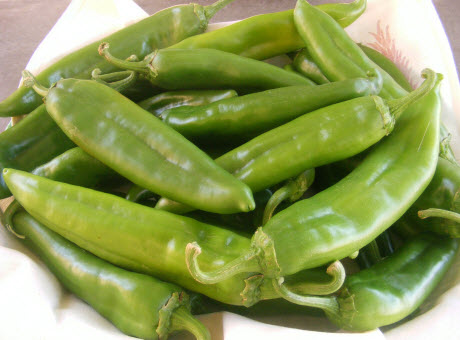Researchers Say Milk Works Best to Extinguish the Heat from Chile Peppers
Milk has a protein in it that replaces the capsaicin on the receptors on your tongue
 According to research conducted by New Mexico State University’s Chile Pepper Institute, milk is the best way to extinguish the heat from chile peppers.Courtesy photoThe next time you bite off more than you can handle in regard to a hot chile pepper, your best bet is to drink some milk. That’s according to research conducted by New Mexico State University’s Chile Pepper Institute.
According to research conducted by New Mexico State University’s Chile Pepper Institute, milk is the best way to extinguish the heat from chile peppers.Courtesy photoThe next time you bite off more than you can handle in regard to a hot chile pepper, your best bet is to drink some milk. That’s according to research conducted by New Mexico State University’s Chile Pepper Institute.
“Capsaicin is the chemical compound found in chile peppers that makes them taste hot,” said Paul Bosland, an NMSU Regents Professor and director of the Chile Pepper Institute. “It turns out that milk has a protein in it that replaces the capsaicin on the receptors on your tongue. It’s really the quickest way to alleviate the burning feeling.”
Bosland said when capsaicin attaches to receptors in your mouth, it sends the same signal to your brain as it would if you had touched something hot. That’s why some people also begin to sweat when they eat hot peppers. Milk, and other dairy products like sour cream or even ice cream, will help to put out that fire.
Related Article: Researchers Uncover Pain-Relief Secrets in Hot Chili Peppers
So, does anything else work?
“Carbohydrates also replace the capsaicin on the receptors, just not as effectively as milk,” Bosland said. “These would be things like bread or sugar. Sugar is the better of the two. That’s why we see the traditional Mexican desserts like flan and sopapillas with honey. These are made from breads, sugars, and milk.”
Bosland often gets calls asking whether alcohol will help with the heat sensation from chile peppers. The answer is no, and water won’t work either. They both just wash the capsaicin around your mouth. Neither will block it.
The very first chile peppers evolved around Bolivia in South America. The early wild peppers were very small and round and were probably spread by birds because they do not have the same heat receptors in their mouths as humans do.
Related Article: Researchers Investigate How Super-Hot Peppers Pack Their Powerful Punch
Experts believe that when the first humans arrived in the Western Hemisphere, probably around 15,000 years ago, they began to cultivate chile peppers and select them for various traits. The plants naturally cross-pollinate well, so new varieties are easily developed and constantly being made. Today, there are thousands of chile pepper varieties, from the super-hot Trinidad Moruga Scorpion to the standard bell pepper, which doesn’t have any heat at all.
“People will often ask, which is hotter, red or green chile peppers,” Bosland said. “It depends on the variety, but generally, red won’t be as hot because red chile peppers will have more sugars in them, which helps to counter the heat.”
An interesting situation happens when astronauts put hot sauce on their food in space, because it doesn’t taste as hot as it does on earth. Bosland said researchers are still trying to figure out why that is.
